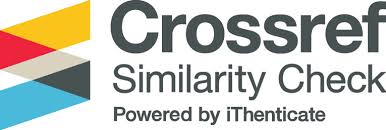Analysis of Antibiotic Utilization in Hospitalized Patients with Thyphoid Fever (ICD A01.0) in Sukoharjo General Hospital 2013 by ATC/DDD Method
Abstract
Typhoid fever is one of healthy problem in Indonesia and other developing countries. Complications and mortality of thyphoid fever decrease with rapid diagnose and appropriate antibiotic treatment. Highly frequency of antibiotic utilization without provisions may result in negative impacts. One quantitative study to analyze drugs utilization is by using the ATC/DDD method. The aim of this study was to determine the quantity of antibiotic utilization in hospitalized patients with typhoid fever in Sukoharjo General Hospital 2013 with ATC/DDD method and compatibility analyze with hospital formularies and hospital medical care standard. This study used a retrospective analysis. The samples used were medical records of hospitalized patients with typhoid fever (≥ 15 years of age) in Sukoharjo General Hospital 2013. Based on the results of this study concluded that the quantity of antibiotic utilization in hospitalized patients with typhoid fever in Sukoharjo General Hospital 2013 calculated based on ATC/DDD method is cefotaxime (36,03%), ampicillin (22,81%), amoxicillin (12,73%), ceftriaxone (10,01%), cefazolin (9,79%),
levofloxacin (4,16%), ciprofloxacin (3,95%), and chloramphenicol (0,52%). Compatibility percentage with hospital formularies 100%; hospital medical care standard 10%.












